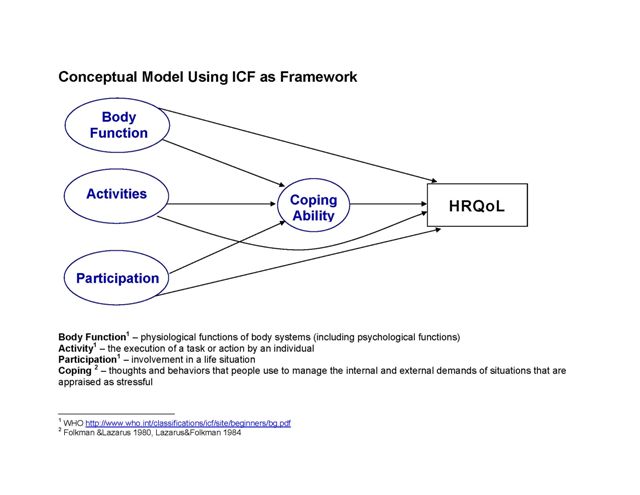|
||||
Monday, October 22, 2007
P2-13
DEVELOPMENT OF A VISION SPECIFIC UTILITIES ELICITATION METHOD
Methods: Between June 1998 and October 1999 443 patients from 18 ophthalmic practices were interviewed using the standard gamble on the policy scale (perfect health–current health–death): diabetic retinopathy (DR) =59, glaucoma=99, macular degeneration (AMD)=44, cataract=132, correctable refractive error (RE)=109. The NEI-Visual Function Questionnaire (NEI-VFQ) and SF-36 were also administered. Only those with chronic diseases (DR, glaucoma, AMD) are included in these analyses. We propose a conceptual model based on the International Classification of Functioning, Disability, and Health (ICF) that defines health-related quality of life (HRQoL) by three constructs: bodily function, activity, and community participation. We also hypothesize that these are modified by a fourth construct we call “coping”, and that the contribution of vision to each latent construct is formed by NEI-VFQ items.
Results: The preliminary results suggest that compared with the conceptual model, the latent constructs are well explained by items from the SF-36, but not the NEI-VFQ items. This indicates that the hypothesized latent constructs are only measured by non-visual functions; visual function measures a separate construct. Exploratory factor analysis shows that the measures of visual function may form two constructs, vision and vision-related pain. An additional measurement model assessing only pain items indicate that vision related pain is not correlated to bodily pain.
Conclusions: Our preliminary results provide further evidence that vision-related quality of life and HRQoL may be two associated but distinct constructs. Further analyses are required to determine if other mediating factors may strengthen this relationship. However, in the absence of such evidence, it is possible that the comparison of cost-effectiveness ratios based upon vision-related utilities to those using health-related utilities is inappropriate.


